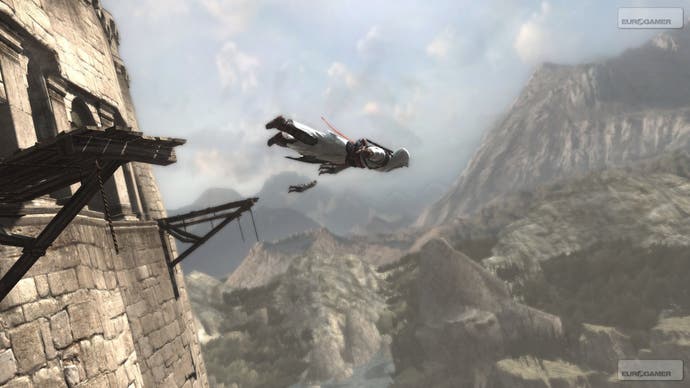Assassin's Creed: Director's Cut Edition
Altaired states.
Let's talk a little about the term "director's cut". If we were to take it literally, it would refer to those rare occasions upon which a maligned film director revisits a studio-butchered film and re-cuts it to his or her satisfaction. In reality, it usually means "we found an extra fifteen minutes of footage that we cut out to make the movie better, but now we've put it back in". But what does it mean in videogames and, in particular, what does it mean for this long-overdue PC version of last year's stabby console hit?
Assassin's Creed was a game burdened with potential, but one that could ultimately only earn the tag of "pretty vacant". For all its expansive medieval vistas and acrobatic action, there wasn't a whole lot going on in the long term. Once you'd guided Altair through his first assassination, you'd pretty much seen everything on offer in terms of gameplay. That you then had to repeat the process eight more times left some players feeling more than a little weary, no matter how lovely the view along the way. So does this "director's cut" represent the fruits of a re-energised creative team polishing a tarnished gem to their satisfaction? Or is it just a tardy port with some inconsequential new bits tacked on?
The second one, sadly.

When I hear the words "director's cut", I tend to expect some fairly substantial changes. New scenes, new characters, new levels, resolutions to otherwise unfinished plot arcs. That sort of thing. For Assassin's Creed PC, the net result of six months of additional work is four new types of "investigation mission". These are the secondary objectives you have to complete in order to amass enough information to launch an attack on one of your nine historical targets. In the console version there were only five such mission types, some of which involved nothing more involved than sitting on a bench and looking at someone. The shallow nature of the tasks, and the protracted repetition, soon began to grate. In theory, bumping that total up to nine should alleviate the problem. And it does. Slightly.
You see, there's nothing in any of the four new mission types that offers anything more in-depth than what PS3 and 360 owners got to sample in November. Rather than exciting new experiences, they're more like variations on established themes. Rooftop Race Challenge, for instance, requires you to run from one informant to another within a time limit. Another fun excuse to hurl yourself from rooftops and scramble up walls, but nothing you won't have already done in the existing flag race missions.


